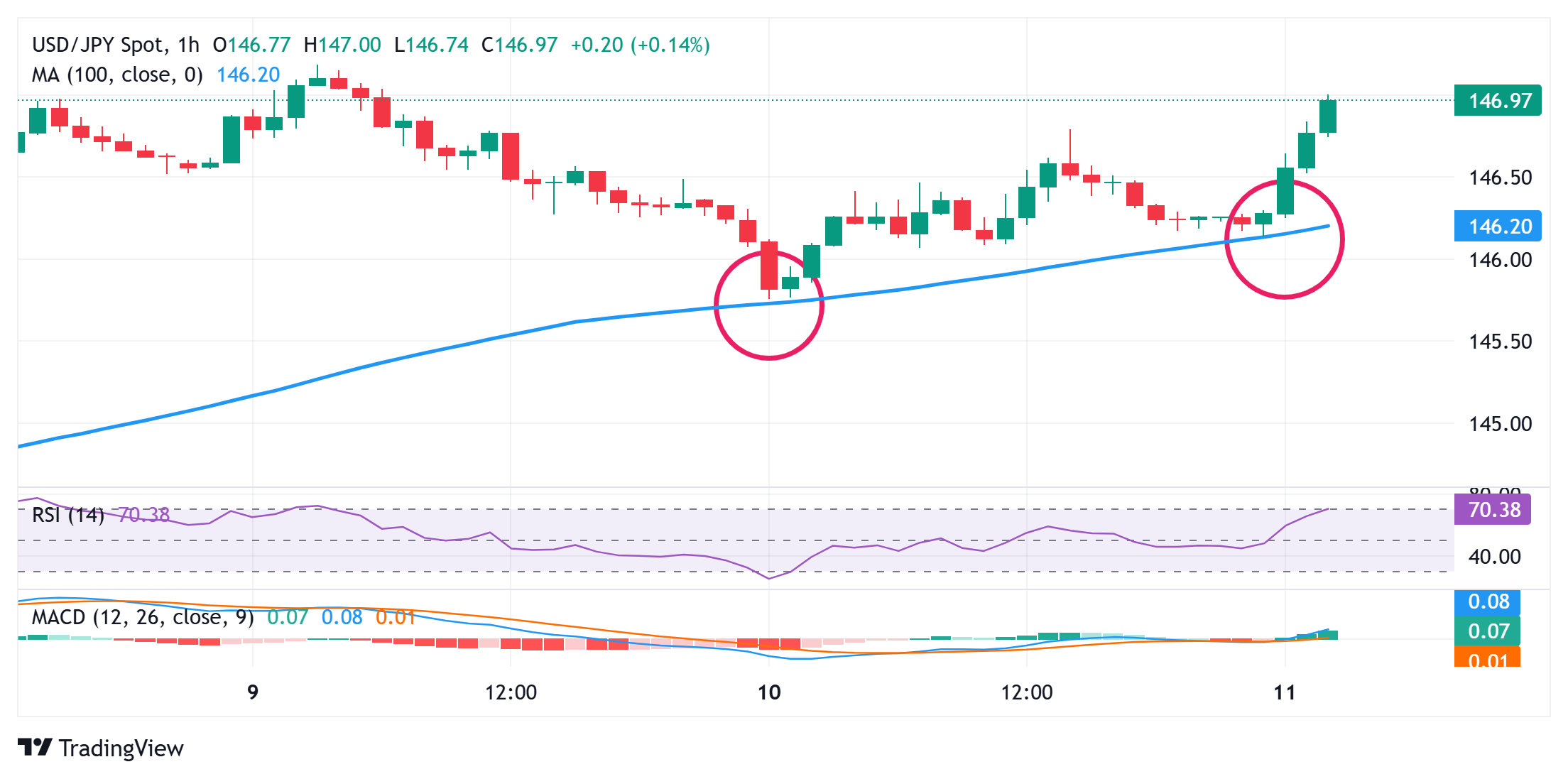Japanese Yen dives back closer to weekly trough against a broadly firmer USD

The Japanese Yen (JPY) drifts lower against a broadly strongerUS Dollar(USD) during the Asian session on Friday and remains on track to register weekly losses amid reduced bets for an immediate rate hike by the Bank of Japan (BoJ). US President Donald Trump recently imposed a 25% tariff on all Japanese exports to America starting on August 1 and ruled out any extension of the deadline. This comes at a time when economic growth has been slowing, which, along with declining real wages and signs of cooling inflationary pressures, should allow the BoJ to forgo raising interestratesthis year.
Furthermore, domestic political uncertainty ahead of the House of Councillors election on July 20 turns out to be another factor that contributes to the JPY's relative underperformance against its American counterpart. In fact, the USD Index (DXY), which tracks the Greenback against a basket of currencies, stands firm near a two-and-a-half week high touched on Thursday amid diminishing odds for a near-term reduction in borrowing costs by theFederal Reserve(Fed). This, in turn, lifts theUSD/JPY pairback closer to the 147.00 mark in the last hour and backs the case for a further appreciation.
Japanese Yen bears retain near-term control amid diminishing odds for an immediate BoJ rate hike
USD/JPY bulls now await sustained strength and acceptance above 147.00 before placing fresh bets
From a technical perspective, the USD/JPY pair attracts dip-buyers near the 100-hour Simple Moving Average (SMA) support for the second straight day. A subsequent strength beyond the 147.00 mark will be seen as a fresh trigger for bullish traders on the back of positive oscillators on hourly/daily charts. Spot prices might then climb towards an intermediate hurdle near the 147.60-147.65 region and eventually aim to retest the June swing high, around the 148.00 round figure.
On the flip side, any corrective pullback might continue to find decent support near the 100-hour SMA, currently pegged near the 146.20 zone. Some follow-through selling, leading to a subsequent break through the 146.00 mark, might shift the bias in favor of the USD/JPY bears. The downward trajectory might then extend towards the 145.50-145.45 area en route to the 145.00 psychological mark.
Tariffs FAQs
What are tariffs?
Tariffs are customs duties levied on certain merchandise imports or a category of products. Tariffs are designed to help local producers and manufacturers be more competitive in the market by providing a price advantage over similar goods that can be imported. Tariffs are widely used as tools of protectionism, along with trade barriers and import quotas.
What is the difference between taxes and tariffs?
Although tariffs and taxes both generate government revenue to fund public goods and services, they have several distinctions. Tariffs are prepaid at the port of entry, while taxes are paid at the time of purchase. Taxes are imposed on individual taxpayers and businesses, while tariffs are paid by importers.
Are tariffs good or bad?
There are two schools of thought among economists regarding the usage of tariffs. While some argue that tariffs are necessary to protect domestic industries and address trade imbalances, others see them as a harmful tool that could potentially drive prices higher over the long term and lead to a damaging trade war by encouraging tit-for-tat tariffs.
What is US President Donald Trump’s tariff plan?
During the run-up to the presidential election in November 2024, Donald Trump made it clear that he intends to use tariffs to support the US economy and American producers. In 2024, Mexico, China and Canada accounted for 42% of total US imports. In this period, Mexico stood out as the top exporter with $466.6 billion, according to the US Census Bureau. Hence, Trump wants to focus on these three nations when imposing tariffs. He also plans to use the revenue generated through tariffs to lower personal income taxes.









_300xx250.jpg)
0 댓글